Honouring Indigenous history: 4 alumni share their stories
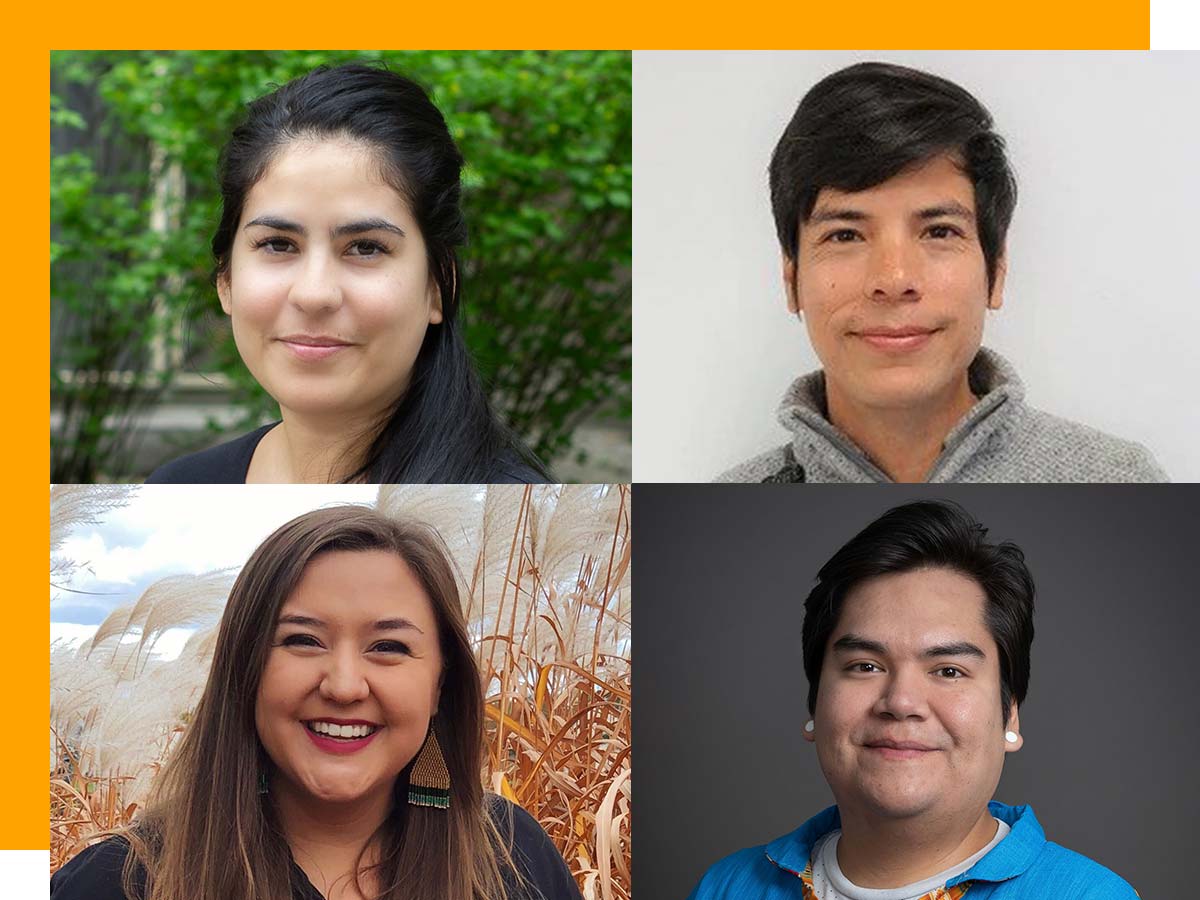
September 30 marks National Day for Truth and Reconciliation — a national observance to honour the lost children and Survivors of residential schools, their families and communities. This day also marks Orange Shirt Day, a day to raise awareness about residential schools and create meaningful discussion about the legacy they have left behind.
In honour of National Day for Truth and Reconciliation, we are spotlighting four Indigenous alumni who are contributing to preserving Indigenous heritage, supporting the health and well-being of their communities and creating a more equitable future for Indigenous youth and peoples in Canada. Hear from Jenna Barnhardt, Donald Corbiere, Megan Lewis, and Nick Wapachee and learn what this day means to them.
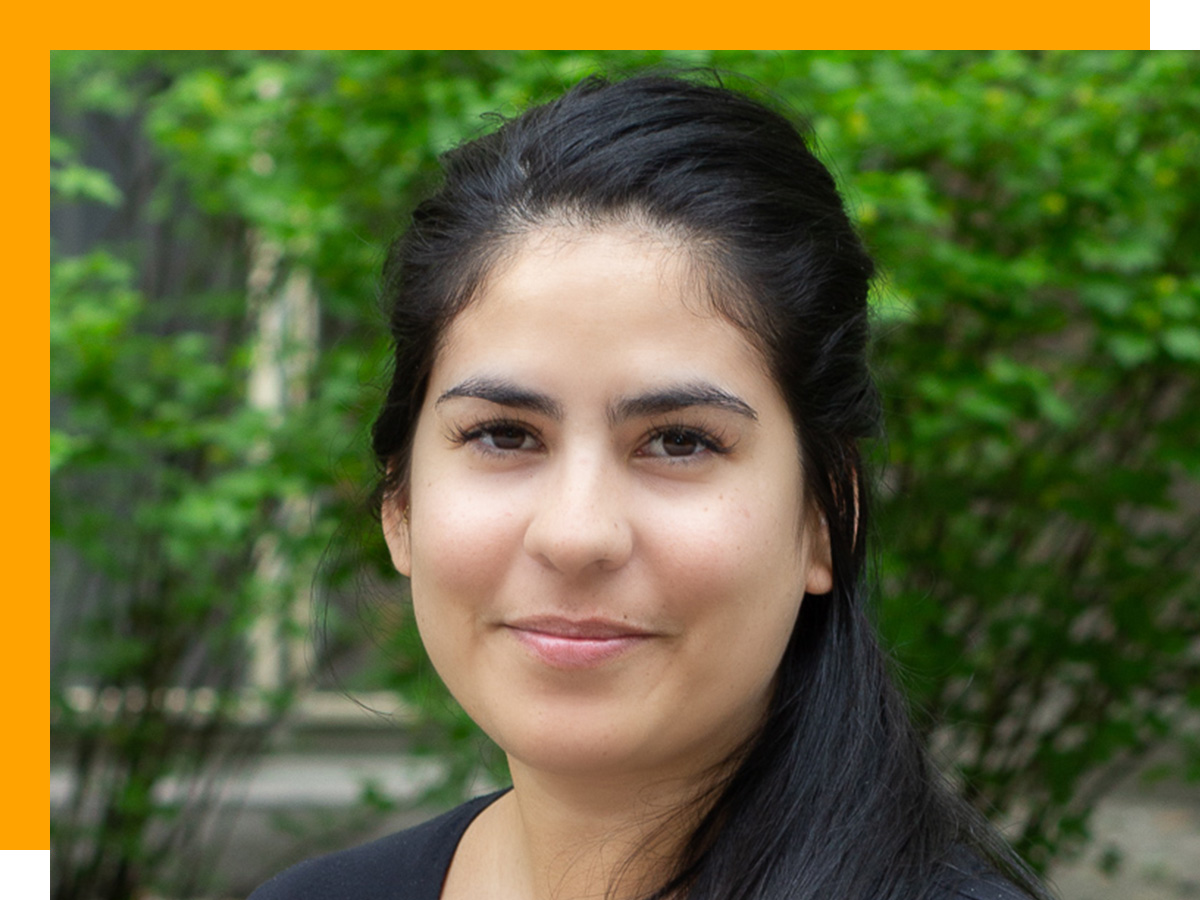
Jenna Barnhardt
Biomedical Sciences ’20, Mental Health and Addictions ’20; Master’s Candidate, Clinical Developmental Neuropsychology, University of Toronto
What does the National Day for Truth and Reconciliation mean to you? And how do you hope Canadians across the country will commemorate this day?
This day brings awareness to what Indigenous people have gone through within the Canadian residential school system, which is often as sad and triggering for many as it is for me. As someone who attended an Indian Day school, this day is a gentle reminder of how far my family and I have come despite these barriers that were put in place. It reminds me that I am still on my journey of reconnecting to my community and my identity as an Indigenous woman, and to have empathy for those who are also trying to connect. I hope other Canadians will take the opportunity to educate themselves and reflect on what this country means to Indigenous people and why our history is so important.
What about your Mohawk heritage and culture makes you most proud?
The legacy of Kanienkehaka is important to me because it’s my entire identity. Both of my parents are from Tyendinaga, and being Mohawk is all I know. I am most proud of my peoples' resilience as Tyendinaga has been the centre of a lot of political standoffs, and Kanienkehaka, in general, have faced a lot of challenges in history and I am very proud of how far we have come, and how strong we are as a community.
You are the creator of Yarnhardts (external link) ! How do arts and crafts celebrate culture and community in your family?
Arts and crafts are extremely important in my family and in my culture. It is a way to be creative, to come together as community, and to practice the skills handed down to us from generations. My mother in particular has always been crafty, she taught me how to be creative, try new things and teach others.
Why is it important to provide more culturally significant approaches in healthcare and what impact do you hope your research in neuroscience and Indigenous mental health will have?
Cultural sensitivity can make or break someone’s experience with the healthcare system, especially in mental health. My research focuses on the neuroscience of Indigenous brains and culturally sensitive approaches to mental health intervention, specifically designed for Indigenous people. Throughout history, the system has been used against Indigenous people creating an atmosphere of distrust between patient and doctor. This is extremely problematic for many reasons but most importantly, it has caused many Indigenous people to have negative experiences within the system that was supposedly established to help them. I hope with my research I can develop new ways to highlight the unique needs of Indigenous people and why Westernized measures of mental health aren’t working.
What can be done to make Indigenous representation in STEM?
As an Indigenous scholar, I face so many barriers and have little to no mentors to guide me on my journey due to a lack of Indigenous representation therefore I am forced to pave a path on my own in a system that does not understand my unique needs. The education system in general needs to focus more on EDI in their policy, the language they use, politics, and funding opportunities. They need to understand these barriers that Indigenous people uniquely face and provide a structure for them to thrive. Diversity within the school (professors, board members, staff, and students), and diverse learning opportunities (research with the community, practical placements or internships designed for Indigenous people) would also help.
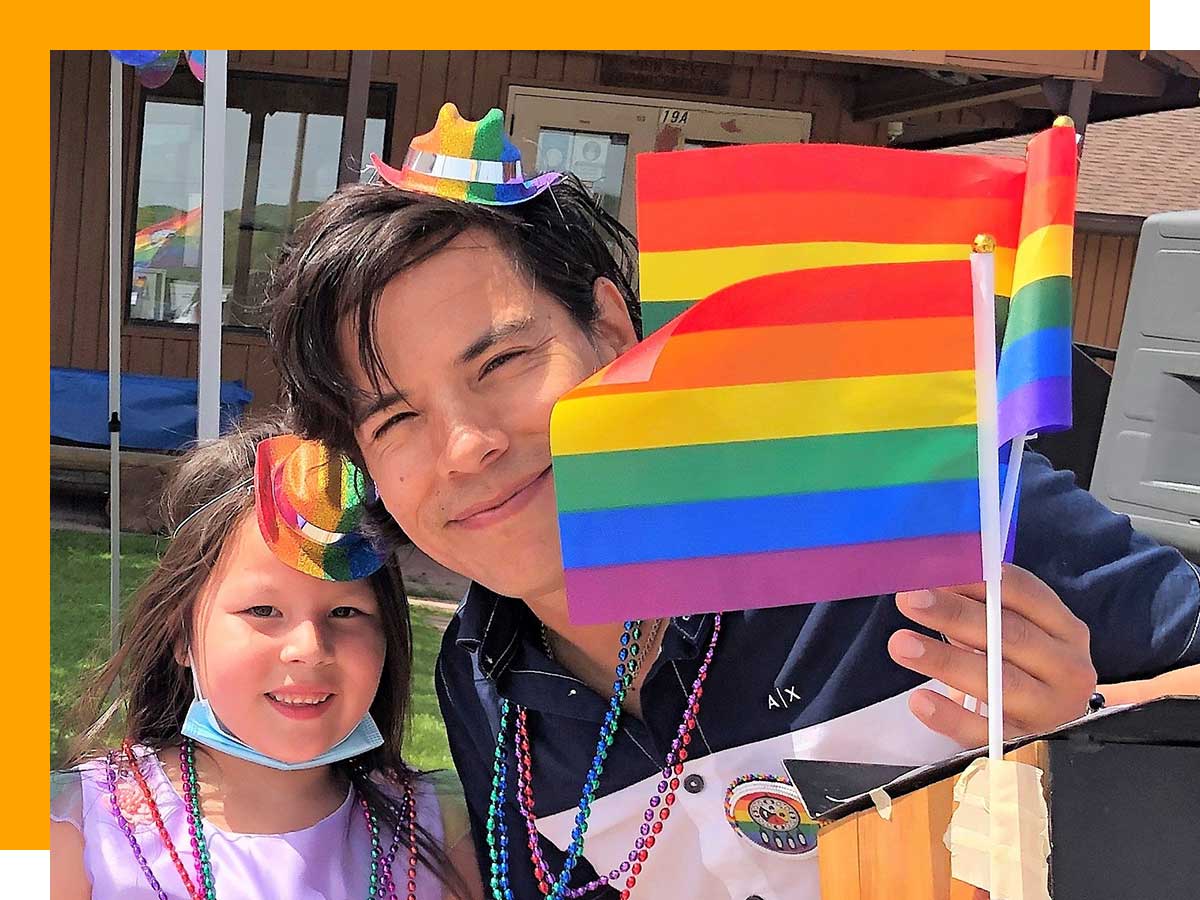
Donald (Dondi) Corbiere
Nursing ’03
Community Health Nurse, Wikwemikong Health Centre
What does the National Day for Truth and Reconciliation mean to you? And how do you hope Canadians across the country will commemorate this day?
When this day was starting to be honoured several years ago, my work at the time included building up opportunities for Indigenous learning with the City Of Toronto’s 20,000+ staff. With our offerings of learning, we always strived to have settlers have moments of feeling uncomfortable, feelings of joy, feelings of surprise, and the feeling like they have connected and increased their Indigenous knowledge. It is essential that settlers take away concrete actions on how and why they will move forward with working alongside Turtle Island’s Indigenous Peoples. Things like ways to talk with your kids about residential schools or volunteering with an Indigenous organization, or using their work to further advocate and think creatively about ways to increase access to city programs and services. Creating “safer spaces” in all settings is key to moving forward with righting relationships.
What about your heritage and culture makes you most proud?
Colonization killed off 70 million of my ancestors, so the fact that despite smallpox blankets, residential schools, being forced off our lands, and being killed in mass slaughters, “The Lake People” have endured and still hold tight to our traditions and live in love and kindness. Odawa women like my mother, Evelyn Corbiere, grew up in the depression, achieved her Master's degree in education, and started working as a teacher in Espanola when she was just 18 years old. My mom is just one example of the Odawa and other Indigenous Persons being superstars and excelling despite all the racist and oppressive barriers that still exist to this day. We were born to run and our Nations still do to this day.
Why are facilities like Wikwemikong Health Centre important to Indigenous communities?
I have worked off and on for the Nahndahweh Tchigehgamig Health Centre, through the years including when I was a Nursing student at TMU. Some of these roles included an Emergency Plan Coordinator, and Diabetes Educator. The Health Centre is incredible in that, at the time that it was built, there were no other spaces anywhere offering the host of services, under one roof. This has only gotten more extensive and now includes a Crisis Response Team. I can’t say enough about this team, because when IAO partnered with Social Development and Finance at the City Of Toronto, we started a similar project, to support community members in crisis, struggling with mental wellness and addictions. I never want to read another news story of 10 Toronto Police officers showing up at a 10th floor apartment, and the young person in crisis still ends up jumping to their death. We need to de-fund this approach, and work towards having proper support and connection mechanisms for people.
“The Ring” was recently installed on campus. Why is placemaking work like this important?
I came back home to the community from working for the City of Toronto at the newly formed Indigenous Affairs Office (IAO). Those two years were an incredibly exciting time in the City Manager's office at IAO, working on large projects specific to First Nation, Inuit, and Métis such as Placekeeping, community consultations, the Data for Equity Project, Indigenous learning (cultural safety), and Indigenous Centre for Innovation and Entrepreneurship, to name a few. I was also working with the TMU Library Team, on the redevelopment of the entire space at Kerr Hall, and this included working with Two Row Architects, from Six Nations. Placekeeping work that celebrates and acknowledges my people, on our territories is so important. You are all Immigrants and need to understand this!
What impact do you hope to have in your work and in the communities you serve?
I am happy to have a sense that my being back on the Wikwemikong Indian Reserve #26 is already having an impact. I came at a time when my team was challenged with supporting the community through the COVID pandemic. My 11 years as an Infection Control Specialist has helped the community understand infection control practices and managing case and contact investigation. Also, it has been a pleasure moving past COVID outbreaks and working on amazing projects like our first Community-Wide Pride Flag raising, and support groups for 2-Spirited, LGBTQ+ community members and their families. We may be the only Reserve on Turtle Island that has done this and so appreciate my friends and family in the community spearheading this important work.
Final thoughts from Donald:
“You can’t take it with you to the grave. Spend it, live life, eat cheese and apple pie.” Adam Corbiere (Miishomis/Grandfather)
BaaMaaPii (see you later), be well, be kind, be humble, and be strong with walking alongside First Nation, Inuit, and Métis persons in creating change and building safer spaces, so young Indigenous people don’t face the racism and oppression so rampant on Turtle Island.
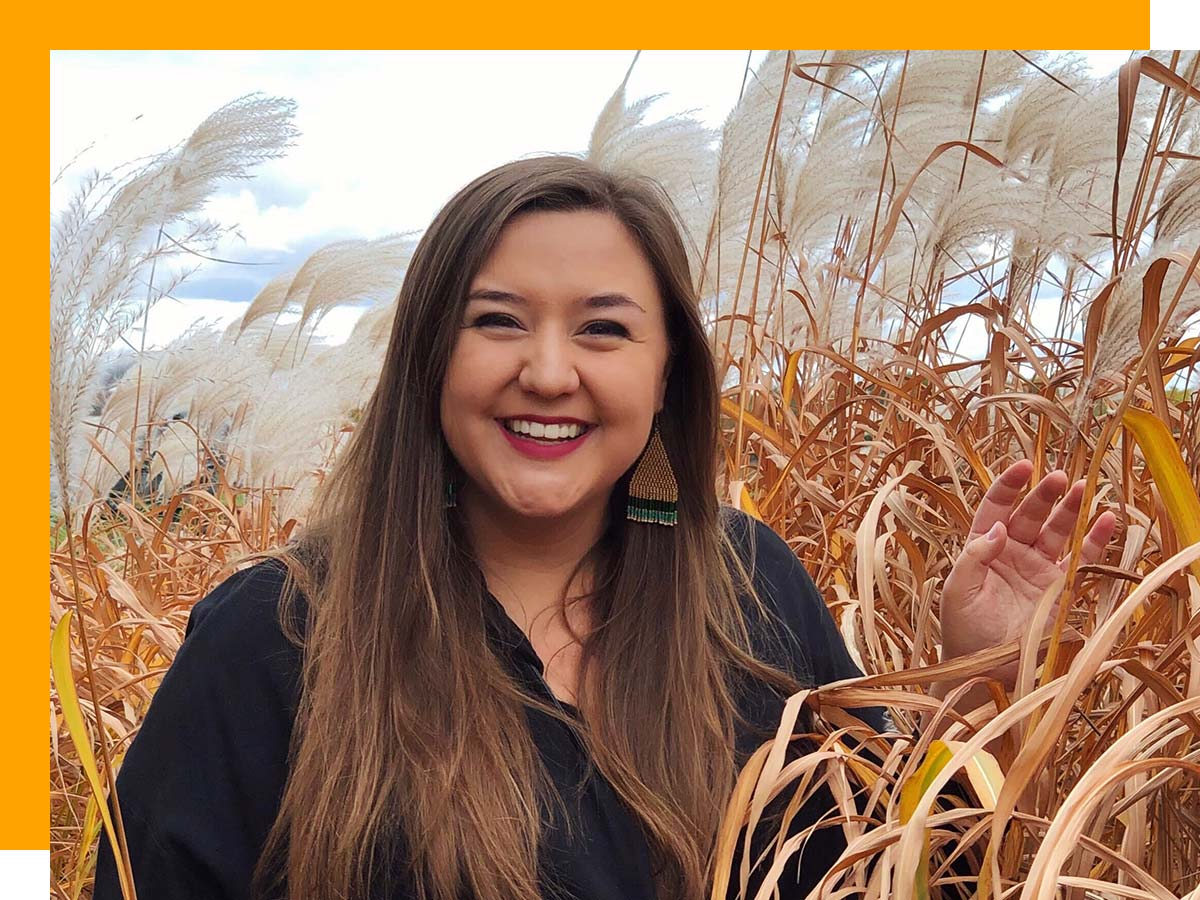
Megan Lewis
Child and Youth Care ’17, Public Policy and Administration ’18 (MA)
Director of Indigenous Policy & Research, Canadian Roots Exchange
What does the National Day for Truth and Reconciliation mean to you? And how do you hope Canadians across the country will commemorate this day?
To me, this day is an important step in hoping everyone begins to develop an awareness of what happened in the past and what is still happening today. It is well understood that there must be truth before reconciliation. And with that, I also believe that education, particularly self-education, is critical. I hope that individuals will take time to learn and, more importantly, to seek ways that they can contribute to meaningful reconciliation and support Indigenous communities beyond this one day. So much work has been done, but there is much more to do, and we all play a role in this, particularly non-Indigenous folks.
What about your Mohawk heritage and culture makes you most proud?
There is so much that I could say here. For me, I feel many of the values that I hold are closely tied to my identity as a Kanien’kehá:ka woman. It has always been natural for me to care for others and community first. It is our collective responsibility to care for others and the land as a way to achieve a sense of balance and connection. In line with putting community first is the importance of building relations based on respect and reciprocity. Ensuring the decisions we make are in the best interest of the community both now and for future generations. This, and the importance of creating spaces that are welcoming to all that enter them is something I carry with me both personally and professionally.
I believe that continuing to put in the work to live up to the responsibility of being a Kanien’kehá:ka woman and making my community proud are the most important to me. Oh, and you can’t forget the power of laughter.
What impact do you hope to have through your work at Canadian Roots Exchange?
Our team here at CRE focuses on engaging Indigenous youth in policy and research by creating more innovative, exciting, and accessible spaces to advocate for and create impactful change. As we know, Indigenous youth are often left out of policy making conversations, and the way our programs are designed and delivered seeks to change that. All our programs connect change-oriented, solutions-focused Indigenous youth to build their skills and confidence to ensure that their priorities are advanced, and perspectives are reflected in government policies and programs.
While we might be the ones delivering the programs and initiatives, it is the youth who come through them that are helping to make the most significant impact. As is the vision and purpose of CRE, we simply hope to create spaces that strengthen and amplify the voices of Indigenous youth and empower them to continue to be strong leaders in their communities.
How can the public and private sector do more to engage Indigenous youth in their work?
There is a lot that both the private and public sector can do to better engage Indigenous youth in their work. Through our work at CRE, we always ensure that before we run engagements or connect youth to external opportunities, that the experience is one that will be relevant and reciprocal in nature. Further, it is important that work has been done to set up engagements in a way that will be respectful and will honour youth for their time and knowledge. We designed an engagement framework full of information that can be used as a starting place for facilitating meaningful engagements with Indigenous youth. You can find it here (external link) !
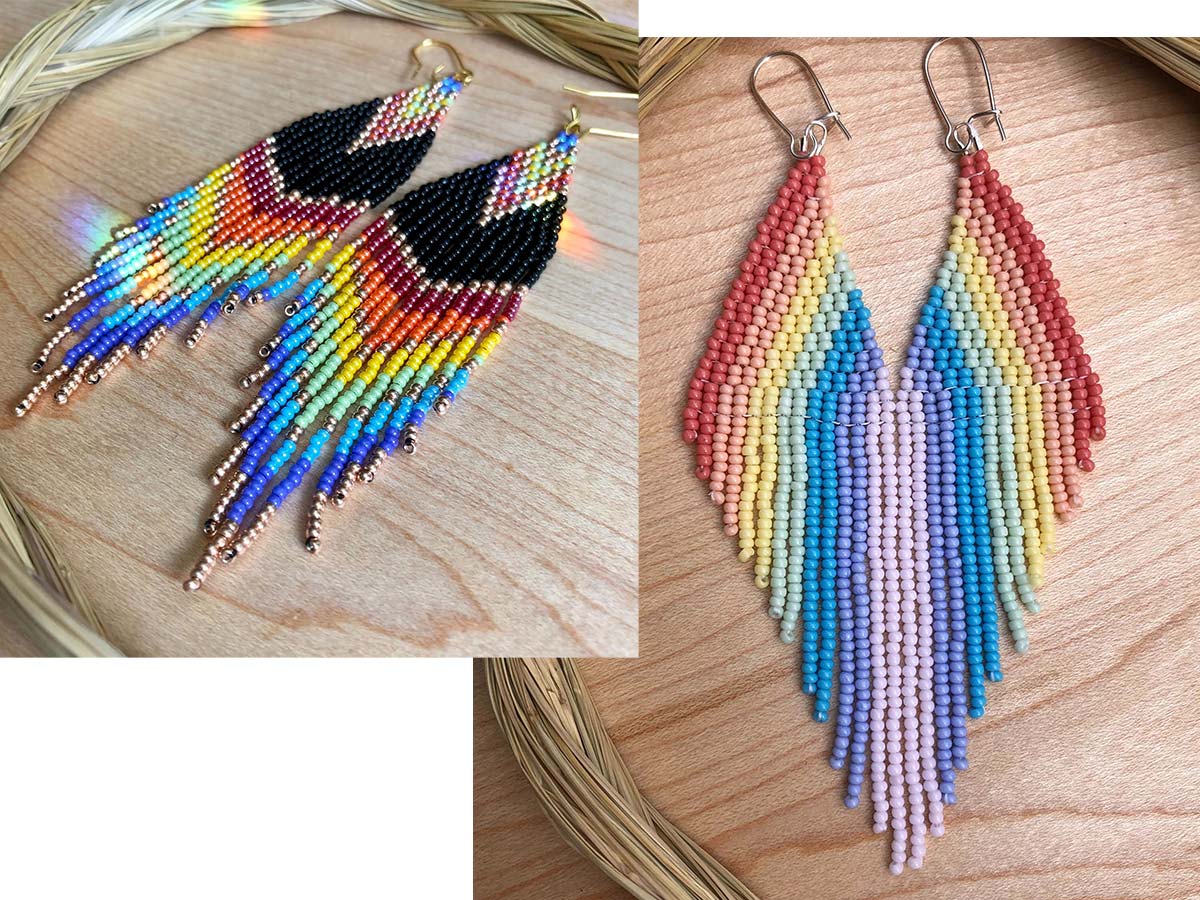
Beadwork jewelry by Megan Lewis
Where did you learn to create beadwork jewelry and why is creating these pieces important to you?
While my sister and I used to bead with our mom when we were kids, it was not quite work that was worth sharing with the world! So, a few years ago after years of collecting beadwork from artists from coast-to-coast, I expressed interest in getting into it myself. My partner set me up with a beading workshop with Ashley-Rose Machendagoos, who is an Ojibway artist from Whitesand First Nation and owner of Zhawenim Designs (external link) . That, in combination with some tips from my sister, I got very into it. So, in February 2020, I launched my business Pine & Needle Designs (external link) as a way to express myself in a creative, and meaningful way.
I have always been deeply inspired by nature and named my business after my specific relationship to the White Pine. Not only have I been surrounded by them my whole life, but it is also the tree that the Haudenosaunee community refers to as the Great Tree of Peace; whose cluster of five needles symbolized the unity of Confederacy Nations. Creating beadwork is important to me for so many reasons. Not only do I see it as a form of advocacy and a way to physically represent Indigenous resilience, but I also see it as an important way to connect with community, which will always be the most important part for me.
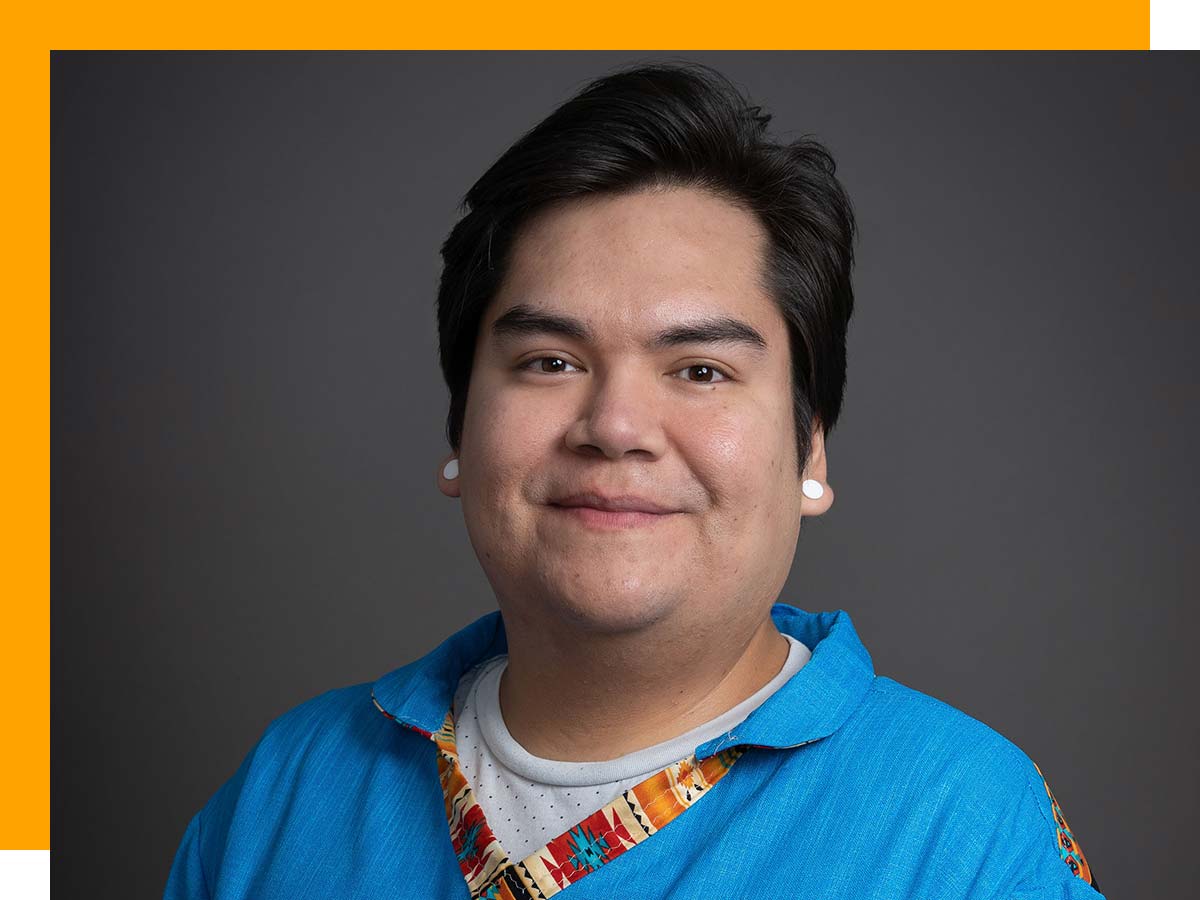
Nick Wapachee
Journalism ’19
Communications Consultant — Cree School Board; Creator, In Eeyou Istchee podcast
What does the National Day for Truth and Reconciliation mean to you? And how do you hope Canadians across the country will commemorate this day?
For me, the National Day for Truth and Reconciliation signifies the restoration of relationships between Indigenous and non-Indigenous communities. It’s an opportunity to learn from one another, particularly about the truth of the residential school era and how it harmed the Indigenous communities. For me, reconciliation means healing Canada from coast to coast, as well as acknowledging the past and moving forward by creating meaningful relationships and partnerships.
I hope Canadians across the country will commemorate this day by learning about Canada’s actual truth by reading about the residential school era, watching documentaries from the survivors, or reading about the survivor’s experiences. I also hope that one day, Canadians will be confident in their partnerships with the Indigenous communities, making efforts to work respectfully and honestly with one another.
What about your Cree heritage and culture makes you most proud?
I am proud of my grandparents for not giving up during the Residential School era. Their resilience speaks volumes when I hear them speak our language and practice our culture on Eeyou Istchee; their bravery and strength have allowed me and my family to experience the richness of our heritage on our territory.
Tell us about the In Eeyou Istchee podcast? What inspired you to create it?
In Eeyou Istchee (external link) podcast builds an online Cree community. It engages and grows with the community by providing the highest quality content that gathers thoughts, ideas and sounds about Cree affairs. The podcast was created to increase the Cree language usage among Cree youth in Eeyou Istchee territory. The inspiration came when I had a conversation with Robbie Matthew Sr., an Elder from Chisasibi. He encouraged me, saying, “you need to create content in Cree” to help preserve the language, and he was right. Since that time, I have created online stories in my language using my voice and a recorder. I’ve also expanded to writing in my language for work using the East Cree syllabics, which are symbols that represent sounds in my language, as another way to preserve the language.
What impact do you hope to have by encouraging others to speak Cree regularly?
I hope the Cree realize that who they are is important and that we matter in this world. Who we are matters, and what we do matters. I hope that my son will be able to speak in Cree with my family and me, despite the current challenges with easily accessible content in the English language. I hope people will immerse themselves in the conversations and learn a word or two when they listen to the podcast. With my work now, I am speaking in Cree on regional radio in our territory. I am constantly expanding my vocabulary and learning new and old terms that reflect today’s Cree language. I also write in Cree syllabics for social media, emails, and posters. In addition, I advise committees on creative ways to include the Cree language in their promotional material.
Which podcasts (Indigenous or otherwise) are you currently listening to?
I listen to The Daily, Dear HBR, Unlocking Us with Brené Brown, 2 Crees in a Pod, H3 Podcast, and Wiih’teh.